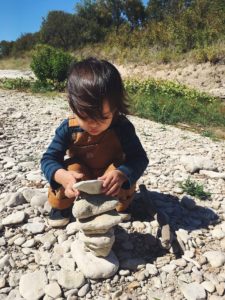
We adore Mr. Rogers. His long-running show, and its spin-off Daniel Tiger’s Neighborhood, are the only TV shows we recommend to our families. He not only has a universal message of love and compassion, but he had a way of saying it all so simply, speaking to children and adults alike. One of our favorite websites, Trillium Montessori, even has an article on just how much Mr Rogers aligns with Montessori, noting that “like Maria Montessori, Mr. Rogers had the gift of observing children, and through his observations, he developed a keen understanding of their needs.”
Over several decades, Dr. Montessori refined the objects (we now call them “materials”) she made available to her little students. Our preschool classroom contains several of the materials that exist just as she designed them, and many others that are in the same spirit. We won’t succeed in having a 2-, 3-, 4- or 5-year old do a task which they don’t, ultimately, see as fun. And, it turns out, modern research has shown that the child’s brain is wired to learn through play. We even call our work-time “Guided Play.”

This is what is behind the oft-cited quote “play is the work of the child.” This common phrase is tossed around in lots of different contexts and often misquoted as Rogers, Montessori or Piaget–last week even by us! While we’re not sure of the source of the quote we do accept it all the same. Several organizations that we turn to for training and guidance have written about play. That said, we educators do give the most credit for this notion of “play is work” to the Father of child-development psychological research, Jean Piaget, who teaches us that learning “require(s) an active learner, not a passive one, because problem-solving skills cannot be taught, they must be discovered.”
